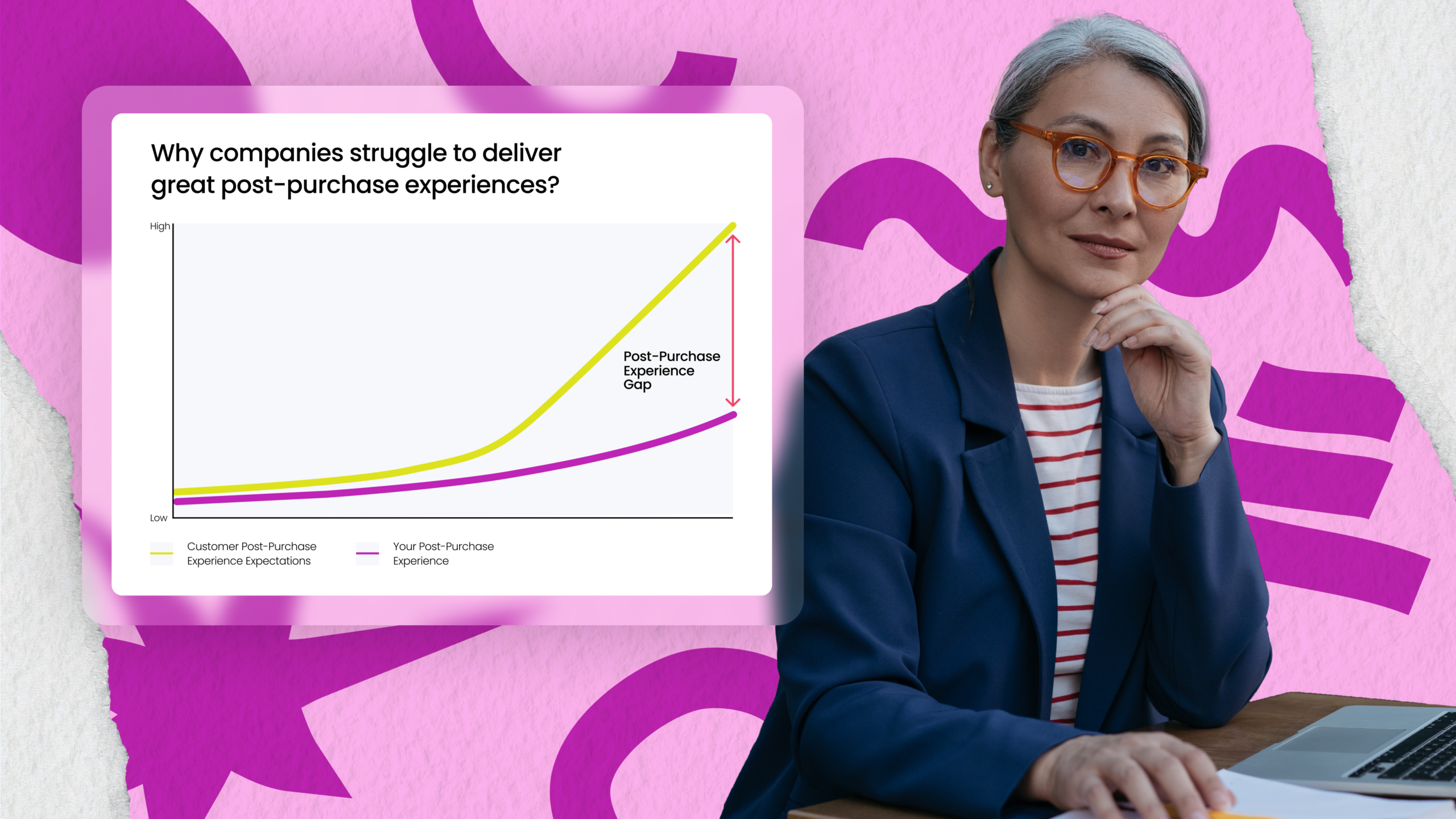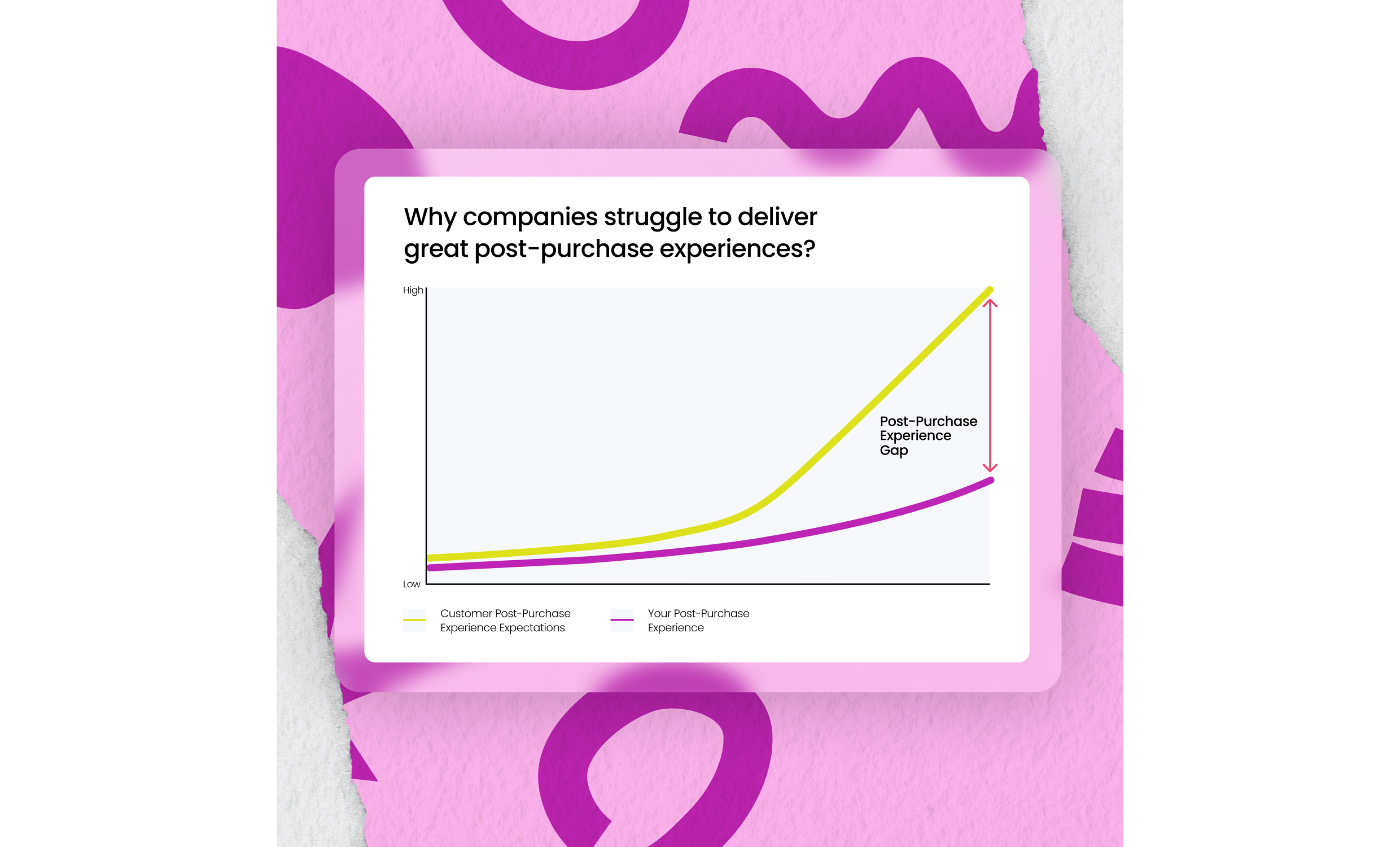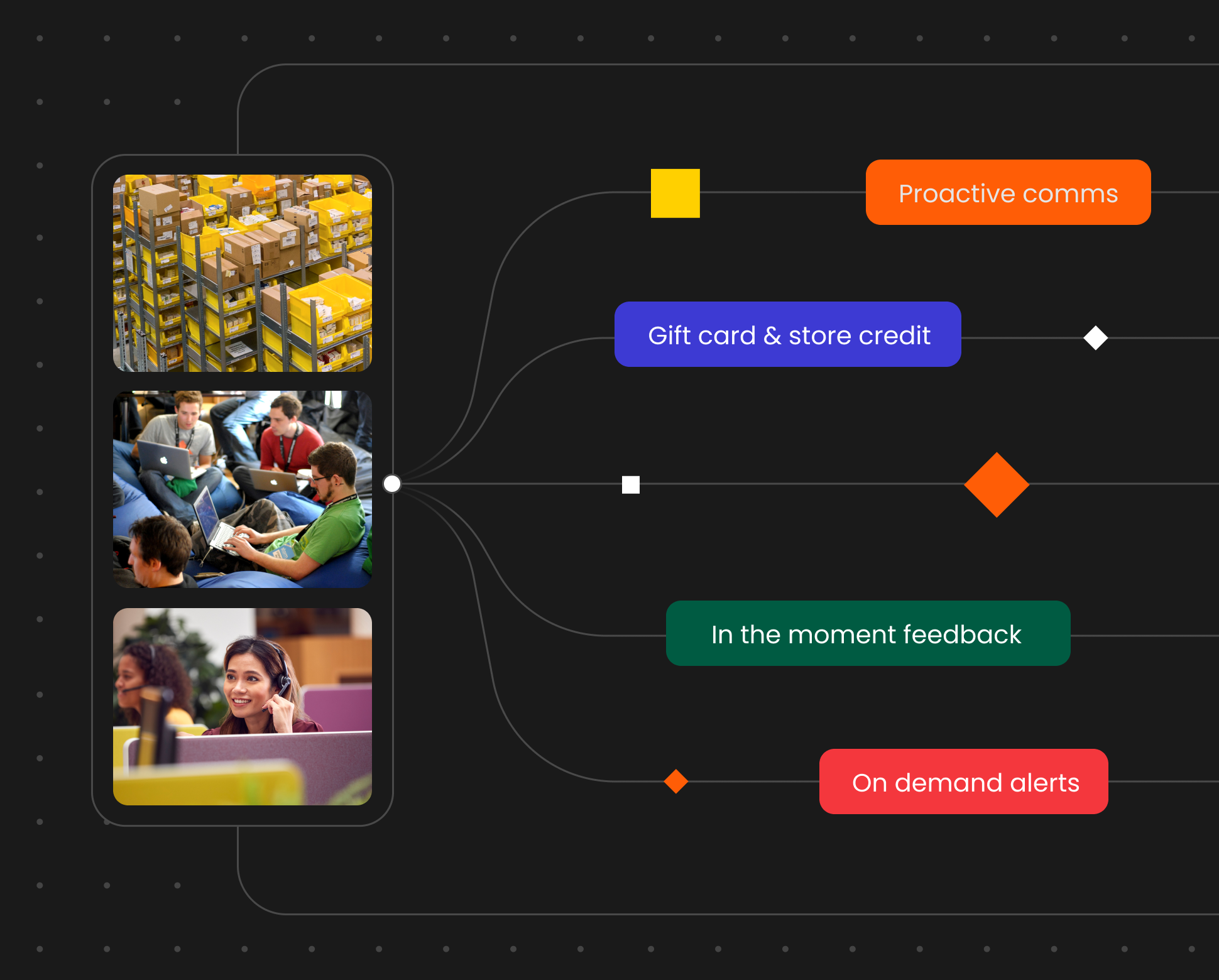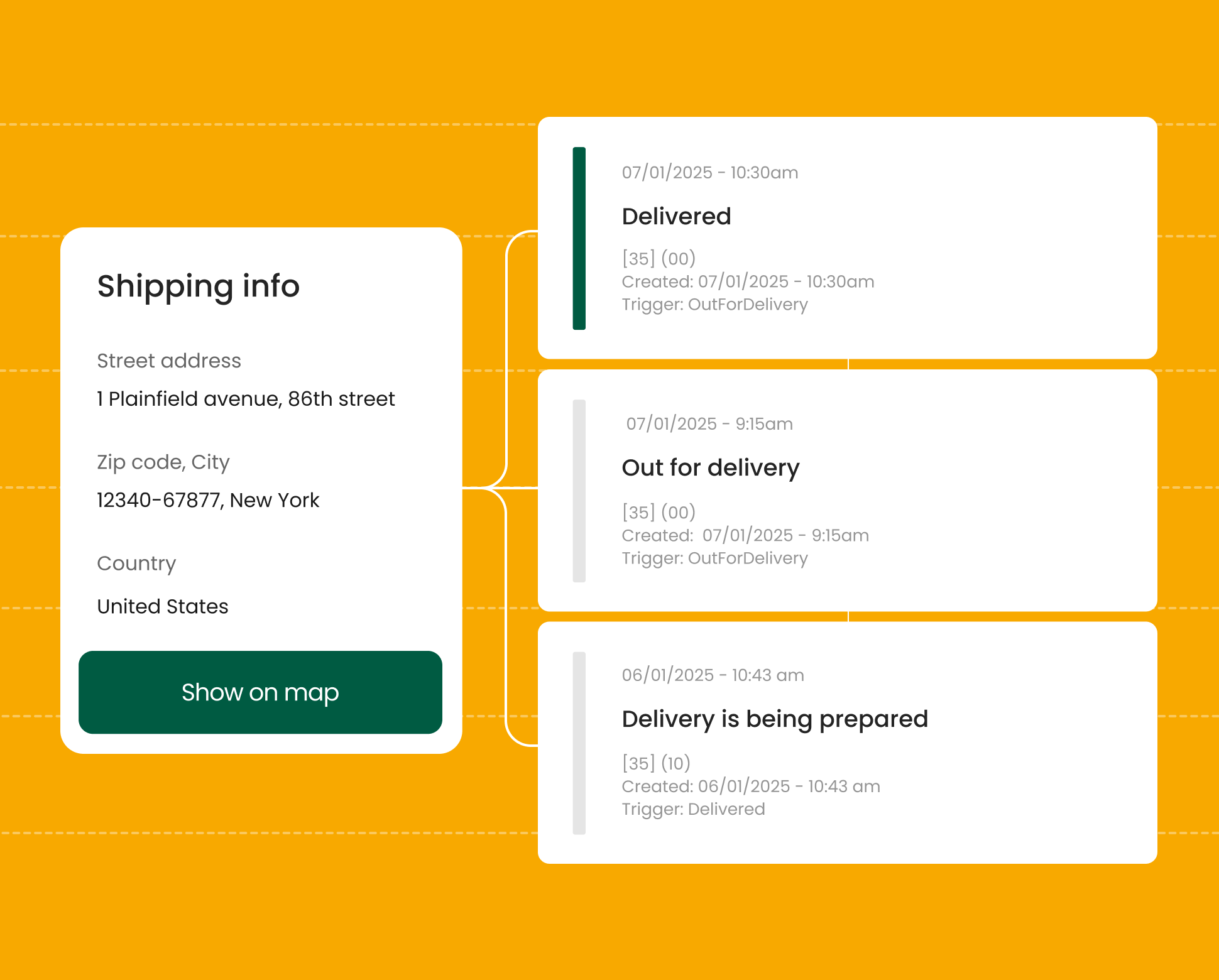Breaking down silos: Elevating the post-purchase experience to a strategic priority

Retail changes at the speed of consumer behaviors and expectations. The post-purchase experience (PPX) has become a critical component of the customer’s experience that can mean maximizing customer lifetime value or churning customers at a record pace.
However, many brands still manage their PPX strategy in silos, with different departments handling isolated tasks. This fragmented approach not only undermines the customer journey but also limits business growth.
At parcelLab, we’ve worked with 800+ global retail brands to transform their post-purchase experience strategy from siloed to strategic. This evolution has paid significant dividends: increased customer lifetime value, reduced customer churn, reduced WISMO calls, and improved operational efficiencies.
One key we’ve identified to unlock an elevated post-purchase experience strategy involves a cross-functional team that includes seven core stakeholders responsible for delivering a great post-purchase experience.
Let’s explore the challenges of a siloed approach to PPX, the negative business impacts, and why elevating PPX to a strategic priority is essential for success.
The siloed approach: challenges and pitfalls

1. Inconsistent customer communication
Challenge: Different departments often manage their own communication channels, leading to inconsistent messaging and customer confusion.
Impact: Customers receive mixed signals, which erodes trust and satisfaction, ultimately affecting brand loyalty.
2. Operational inefficiencies
Challenge: Siloed operations result in fragmented processes, with each team focusing on its own KPIs rather than a unified strategy.
Impact: This leads to bottlenecks, delays, and increased costs, negatively impacting the overall efficiency of order fulfillment and returns.
3. Missed revenue opportunities
Challenge: Without a cohesive strategy, opportunities for cross-selling and upselling during the post-purchase phase are often overlooked.
Impact: Brands miss out on potential revenue streams, reducing customer lifetime value and overall profitability.
4. Data silos and lack of insights
Challenge: Data is often scattered across different systems, making it difficult to gain comprehensive insights into customer behavior and logistics performance.
Impact: This hampers informed decision-making and the ability to personalize the customer journey, limiting the potential for enhancing customer engagement.
The negative business impact of a siloed PPX
- Customer churn: Inconsistent experiences lead to dissatisfaction, increasing the likelihood of customers switching to competitors.
- Increased costs: Inefficiencies in the post-purchase process drive up operational costs, reducing overall profitability.
- Brand erosion: Poor post-purchase experiences damage brand reputation, making it harder to attract and retain customers.
- Stagnant growth: Without leveraging post-purchase touchpoints, brands struggle to maximize customer lifetime value and drive sustainable growth.
Elevating PPX to a strategic priority: The path forward

1. Foster cross-functional collaboration
- Encourage collaboration among the seven core stakeholders (Operations Leader, Logistics Leader, CX Leader, Contact Center Leader, Digital Leader, Marketing Leader, CIO/Tech Leader) to create a unified PPX strategy.
- This ensures that all aspects of the customer journey are aligned and optimized, breaking down silos and fostering a holistic approach.
2. Leverage technology and data
- Utilize advanced analytics and AI to gain insights into customer behavior and logistics performance, enabling informed decision-making and personalization.
- Integrate systems to create a seamless flow of data, providing a comprehensive view of the customer journey and enabling proactive engagement.
3. Streamline processes and communication
- Implement cohesive communication strategies that ensure consistent messaging across all customer touchpoints, building trust and enhancing the overall experience.
- Optimize resource allocation and automate processes to reduce bottlenecks and improve efficiency in order fulfillment and returns.
4. Focus on customer-centricity
- Prioritize the customer experience at every stage of the post-purchase journey, addressing customer needs proactively and ensuring a seamless, hassle-free experience.
- Engage customers with personalized offers and recommendations, leveraging post-purchase touchpoints to drive additional revenue.
The benefits of a strategic PPX
- Increased Customer Lifetime Value: A seamless and satisfying PPX encourages repeat purchases and builds long-term loyalty, maximizing customer lifetime value.
- Operational Efficiency: Streamlined processes reduce costs and improve delivery times, enhancing overall efficiency and profitability.
- Competitive Advantage: Brands that excel in PPX stand out in a crowded market, attracting and retaining more customers and driving sustainable growth.
Conclusion: The imperative for change
The post-purchase experience is not just a series of tasks; it’s a critical component of your brand’s success. By breaking down silos and elevating PPX to a strategic priority, brands can close the experience gap and unlock significant value. It’s time to rethink how you approach the post-purchase journey and embrace a more integrated, customer-centric strategy. The future of your brand depends on it.
In this blog series, we will take a deeper dive into the core stakeholders and their role in an integrated post-purchase experience:
The Operations leader: Streamlining efficiency in PPX
- Explore how operations leaders optimize processes and reduce costs to enhance the post-purchase experience.
The Logistics Leader: Ensuring timely and accurate deliveries
- Discuss the role of logistics leaders in managing delivery complexities and improving customer satisfaction.
The CX Leader: Crafting a seamless customer journey
- Explore the customer experience leader’s role in enhancing satisfaction and loyalty through a cohesive PPX strategy through journey mapping and experience design.
The Contact Center leader: Providing exceptional support
- Examine the importance of efficient customer support in resolving issues and maintaining trust.
The Digital leader: Leveraging technology and data for personalization
- Highlight the role of digital leaders in leveraging technology to automate and personalize the post-purchase journey.
The Marketing leader: Maximizing revenue opportunities
- Activating post-purchase touchpoints for cross-selling and upselling, creating emotional connections with customers through personalization and strengthening brand loyalty.
The CIO/Tech leader: Integrating data for a unified experience
- Discuss the importance of data integration and analytics in providing a comprehensive view of the customer journey.
Each blog will focus on the specific role and importance of these stakeholders in delivering a seamless and strategic post-purchase experience, highlighting the need for cross-functional collaboration and integration.



